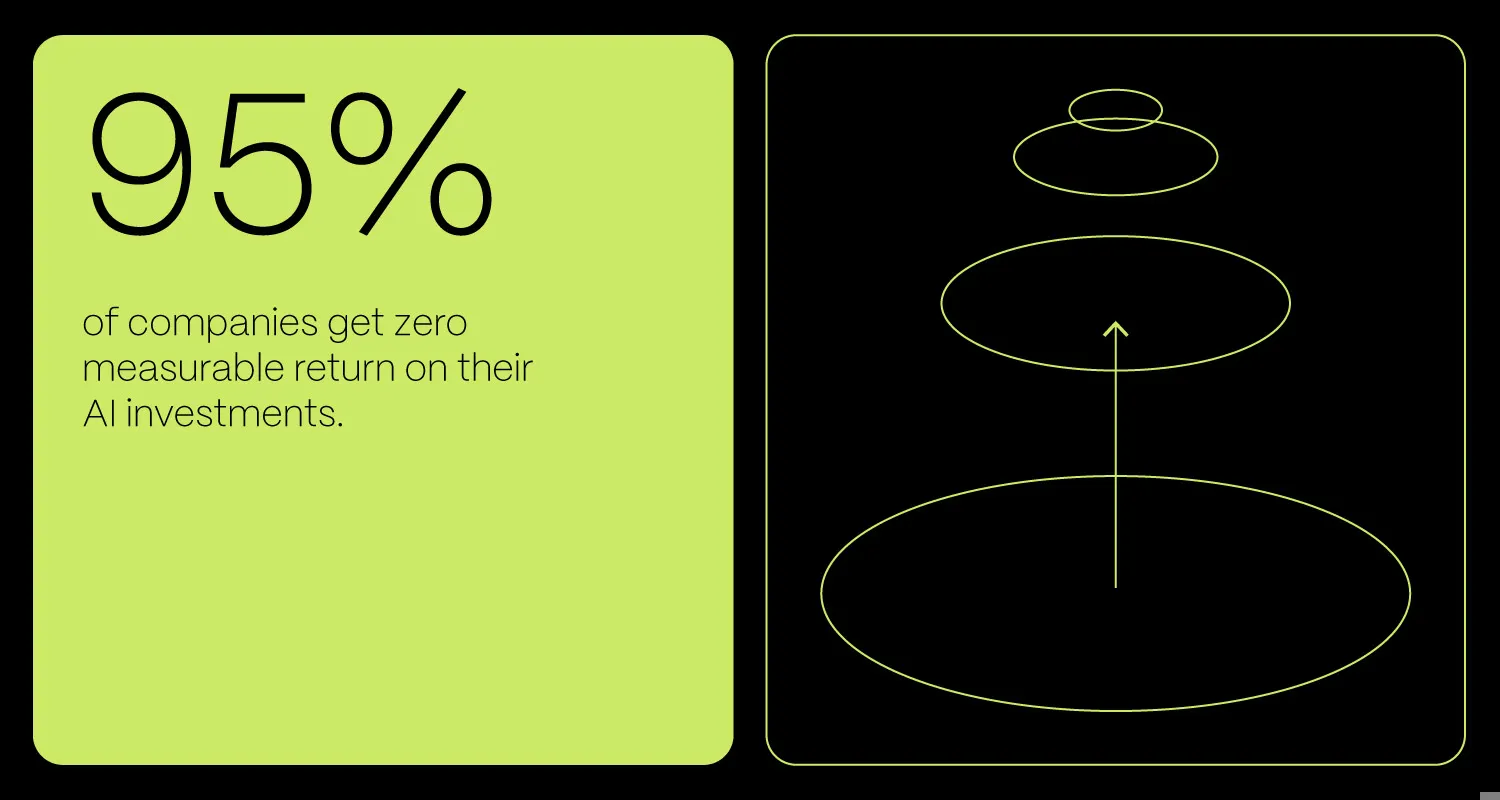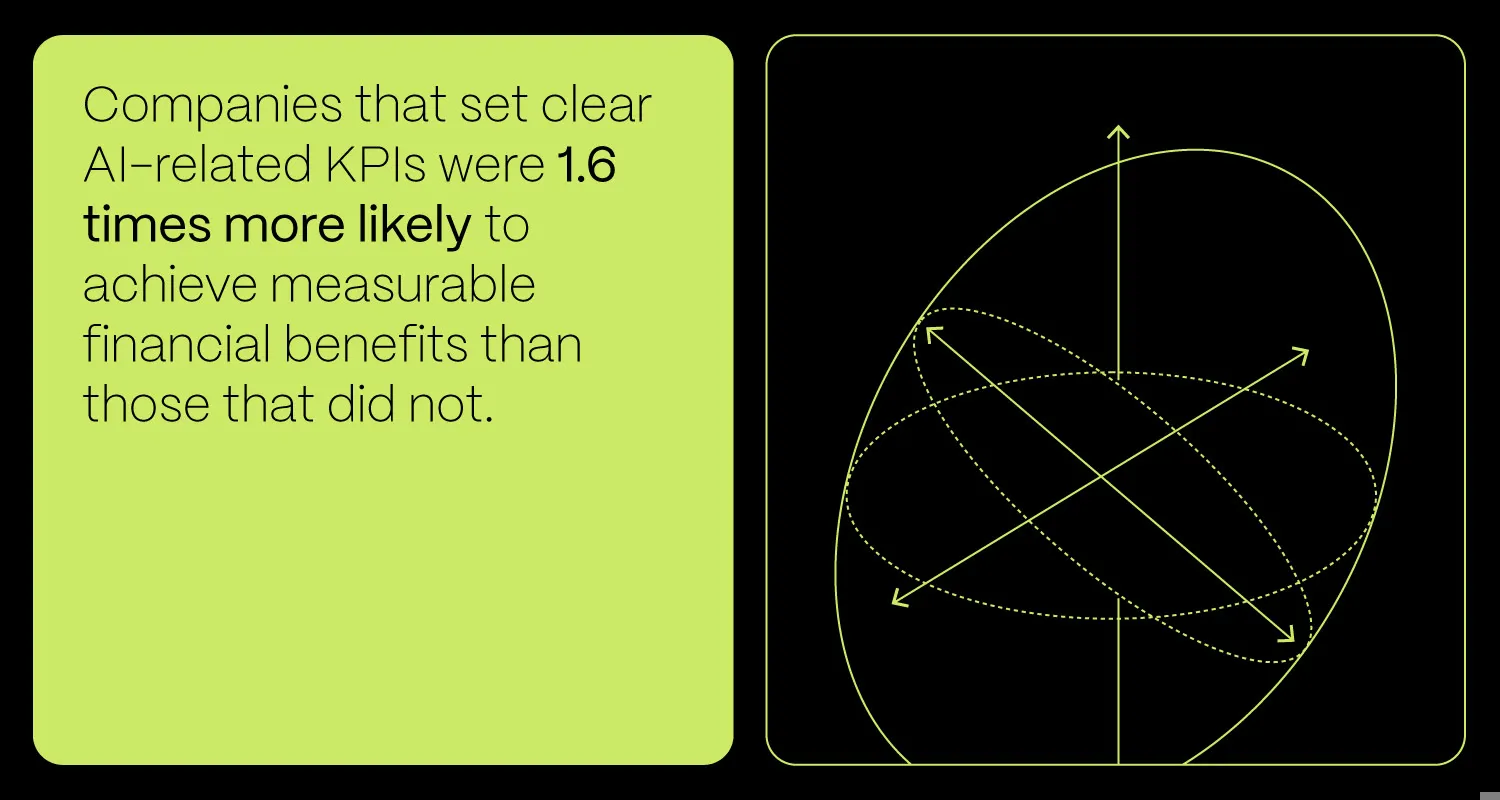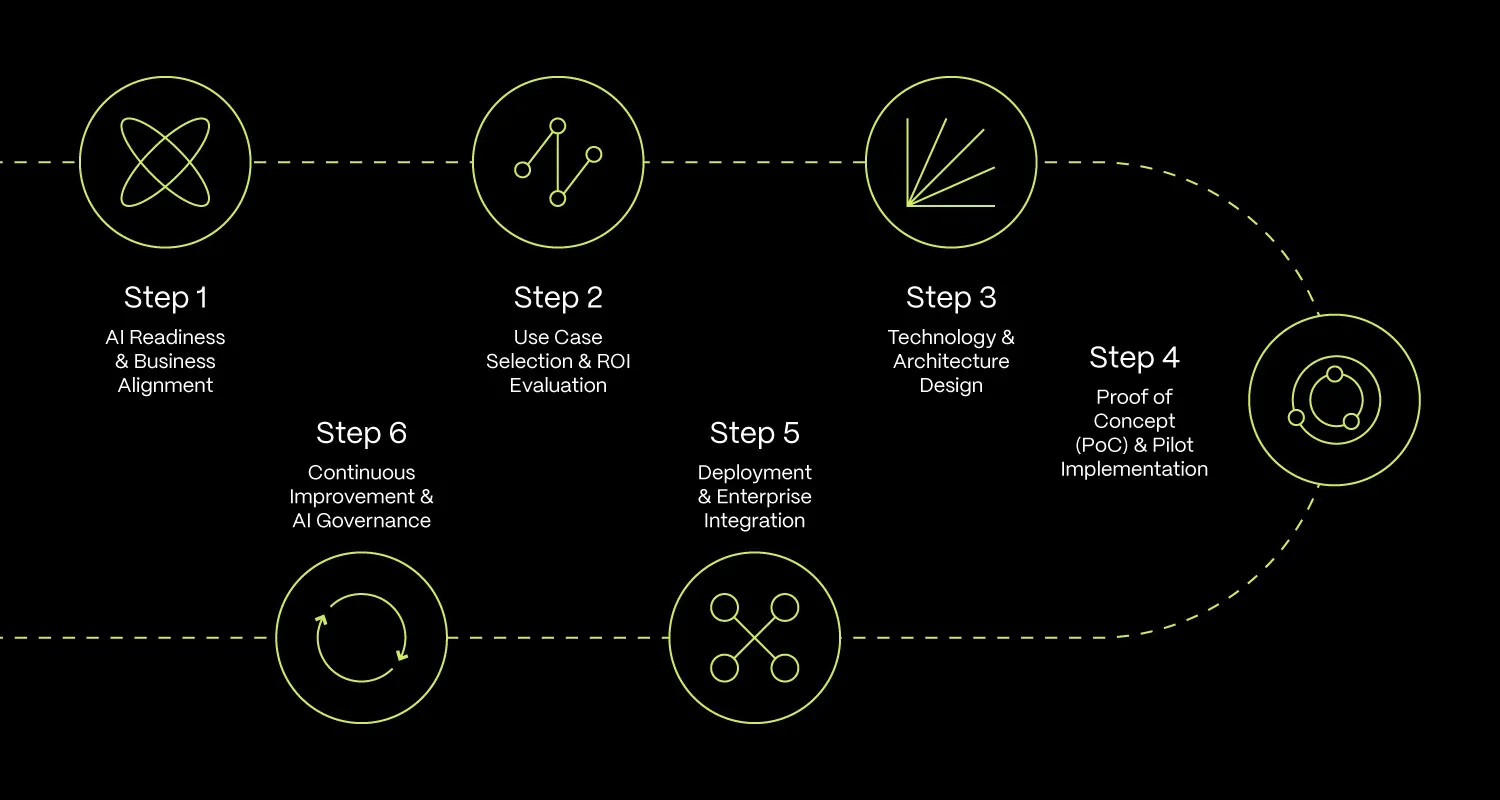Digital transformation: How to implement agentic AI into daily operations

According to BCG, nearly 60% of AI projects stall at the pilot stage, not because the technology fails, but because the implementation lacks structure.
This isn’t an isolated issue. The State of AI in Business 2025 report found that 95% of companies get zero measurable return on their AI investments despite $30–40 billion spent globally. Furthermore, while over 80% of them have explored tools like ChatGPT or Copilot, only 5% of custom AI pilots ever reach production.
call this gap the GenAI Divide, which refers to high adoption but low transformation. Namely, the problem is not the model or regulations, but the lack of systems that learn, adapt, and integrate into real workflows.
The good news is that companies can cross this divide by focusing on structured implementation, workflow alignment, and strategic partnerships with digital transformation companies.
That is exactly what this article explores. We will discuss how to:
- prepare your organisation for Agentic AI;
- select the right initial use case;
- set measurable goals;
- and navigate the technical aspects of implementation.
By the end, you'll have a clear plan to move from concept to execution, turning Agentic AI into a driver of real business value.
Lay the groundwork for agentic AI
Before you get to introduce Agentic AI into daily operations, make sure everything is in place. Skipping this phase often leads to stalled solutions that fail to meet expectations.
Key areas to consider include:
- data readiness: Agentic AI is only as effective as the quality and accessibility of your data;
- right expertise: The right expertise can come from strong technical skills and collaboration between your in-house experts, engineers, and process owners, or from partnering with the right digital transformation partner;
- cross-departmental support: Implementation cannot be confined to a single department. Make sure you gain support from leadership and collaborate with all teams to ensure smoother integration and quicker adoption;
- realistic process and business alignment assessment: Keep in mind that not all workflows are ready for automation, nor should all of them be automated. By evaluating complexity, dependencies, and alignment in advance, you avoid unnecessary risks.
How to choose your first use case
A recent survey of almost 1,900 IT and business leaders found that 71% believe choosing the wrong AI use case can damage their company’s market position.
That is why you should always consider the business impact of AI implementation. Look for processes that carry real business weight without jeopardising broader operations.
Start from workflows that are moderately complex yet well understood within the company. If the process is too simple, it might not demonstrate the full value of AI. On the other hand, if it is too complex, it can stall adoption before it shows results.
For example, in the insurance industry, a common entry point could be document-heavy claims management. Automating this step has been shown to cut processing time, freeing staff to focus on higher-value tasks while directly improving customer satisfaction.
Also, don’t neglect the scalability potential and long-term results. A strong first use case is never a one-off experiment but rather a foundation for wider transformation.
A retail company, for example, might start with an AI agent handling support tickets for one product line. Once proven effective, the same framework can be rolled out across product categories and customer channels. This approach ensures that early investments create a roadmap for broader adoption rather than isolated wins.
Defining goals and KPIs
A disciplined approach to AI implementation definitely pays off. According to McKinsey’s 2024 State of AI report, companies that set clear AI-related KPIs were 1.6 times more likely to achieve measurable financial benefits than those that did not.
So, when defining goals and KPIs, four principles matter most:
Alignment with business strategy
KPIs should reflect outcomes that matter at the organisational level, whether that is reducing costs, accelerating cycle times, or improving the quality of customer interactions.
A vague objective, such as increasing efficiency, offers little direction. A concrete target, such as cutting average processing time for customer requests by 30% within six months, creates both focus and accountability.
Measurability
Additionally, goals need to be expressed in clear numbers, such as percentages, time saved, error rates reduced, or throughput increased. This transforms objectives from aspirations into benchmarks that can be tracked and validated.
Leading and lagging indicators
Leading indicators don’t tell you whether you’ve reached your destination, but they signal that you’re moving in the right direction. For example, if an AI system is automating customer support requests, an early sign of progress could be the growing percentage of tickets resolved without human intervention.
Lagging indicators, on the other hand, are the final score. They measure the ultimate effect on the business once the process has matured, such as the overall reduction in support costs, higher customer satisfaction scores, or improved retention rates. These metrics arrive later, but they determine whether the initiative truly delivered value.
Unsurprisingly, the two complement each other. By monitoring leading indicators, organisations can adjust quickly based on early signals, while with lagging signals, they prove the strategic impact of digital transformation.
Documentation and communication
KPIs should be documented and communicated across all relevant teams. Engineers, process owners, and business stakeholders must share the same understanding of success to avoid misalignment and to create momentum once results start to appear.
The final step - technical implementation and further considerations
With the groundwork laid, the first use case chosen, and KPIs defined, the next challenge is execution. This is where vision meets reality, and where many organisations struggle.
Choosing the right technology
The selection of AI platforms and tools must be guided by the specific use case and the organisation’s existing digital ecosystem. The priority is not the most advanced tool on the market, but the one that integrates seamlessly with core systems such as ERP, CRM, or document management platforms. Flexibility, interoperability and vendor support often matter more than cutting-edge features.
Integration with existing systems
Data pipelines, APIs, and workflow connectors are the backbone of a successful deployment. Without this layer of integration, even the most sophisticated AI will remain a siloed experiment with limited value.
Piloting with purpose
A limited rollout in a controlled environment allows teams to validate functionality, monitor KPIs and surface unexpected challenges. Companies that treat pilots as experiments without clear success criteria often end up in pilot purgatory, where projects run indefinitely but deliver no real impact.
Scaling and broader implementation
Once a pilot demonstrates value, the next step is systematic expansion. Scaling should be deliberate, moving from one team or process to adjacent ones, while ensuring that quality and user experience are not compromised. The objective is to establish repeatable patterns that reduce the effort required for future deployments.
Continuous improvement
Agentic AI is not a “set and forget” initiative. Models require retraining, workflows must adapt to new data, and processes need periodic optimisation. Organisations that build feedback loops into their AI systems report sustained performance improvements, while those that neglect this step often see diminishing returns after the initial rollout.
How we can help you put Agentic AI into action
From the examples above, executing Agentic AI is as much about organisational readiness as it is about technology.
That’s where Vega IT steps in as your digital transformation partner. We have developed a comprehensive AI strategy framework that aligns your AI ideas with realistic business outcomes.
This is a structured, six-step process that guides you through every stage of the journey:
- Before building anything, we identify where AI creates real value. Through readiness workshops, we assess data maturity, infrastructure, skills, and compliance constraints. At the end of this step, we'll have uncovered high-impact AI opportunities that balance business value with implementation complexity and an AI implementation roadmap.
- Not all AI projects create value. We build an AI strategy with prioritised use cases through feasibility scoring, ROI modelling, and impact assessment.
- This is when we design technology blueprints and a system architecture that fit smoothly into your existing processes and IT landscape. The outcome of such strategic implementation is a clear architectural vision and integration plan that ensure AI solutions scale securely and align with your broader technology strategy and compliance requirements.
- By designing and running structured pilots that test and measure AI solutions in real conditions. This includes feasibility studies, ROI analysis, and pilot rollouts. You walk away with proven AI use cases, validated ROI, and practical insights that turn concepts into scalable, real-world solutions.
- At this stage, we define the infrastructure, ensure scalability and security, and align AI with your business processes. With an AI training in place and adequate change management, we create a future-ready ecosystem where technology, your systems, and people all work together to enable long-term adoption and measurable results.
- Running an AI system requires proper governance with constant monitoring and improving. To effectively scale AI systems, alignment achieved in previous phases, between technology, business users and regulatory frameworks, needs to be maintained and further improved. That's where we'll lead you to – an AI system that is reliable, cost-effective and continuously evolving to satisfy a growing business and its needs.
When every layer, from data to strategy to governance, works together, AI stops being a project and becomes a part of your operational excellence. That’s exactly the shift Agentic AI represents, and it's time to put it in motion.





